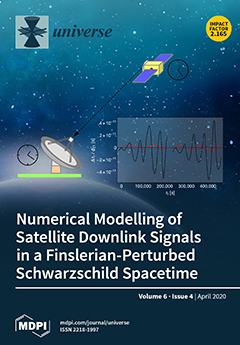We derive generalised uncertainty relations (GURs) for orbital angular momentum and spin in the recently proposed smeared-space model of quantum geometry. The model implements a minimum length and a minimum linear momentum and recovers both the generalised uncertainty principle (GUP) and extended uncertainty principle (EUP), previously proposed in the quantum gravity literature, within a single formalism. In this paper, we investigate the consequences of these results for particles with extrinsic and intrinsic angular momentum and obtain generalisations of the canonical
and
algebras. We find that, although
symmetry is preserved on three-dimensional slices of an enlarged phase space, corresponding to a superposition of background geometries, individual subcomponents of the generalised generators obey nontrivial subalgebras. These give rise to GURs for orbital angular momentum while leaving the canonical commutation relations intact except for a simple rescaling,
. The value of the new parameter,
, is determined by the ratio of the dark energy density to the Planck density, and its existence is required by the presence of both minimum length and momentum uncertainties. Here, we assume the former to be of the order of the Planck length and the latter to be of the order of the de Sitter momentum
, where
is the cosmological constant, which is consistent with the existence of a finite cosmological horizon. In the smeared-space model,
ħ and
are interpreted as the quantisation scales for matter and geometry, respectively, and a quantum state vector is associated with the spatial background. We show that this also gives rise to a rescaled Lie algebra for generalised spin operators, together with associated subalgebras that are analogous to those for orbital angular momentum. Remarkably, consistency of the algebraic structure requires the quantum state associated with a flat background to be fermionic, with spin eigenvalues
. Finally, the modified spin algebra leads to GURs for spin measurements. The potential implications of these results for cosmology and high-energy physics, and for the description of spin and angular momentum in relativistic theories of quantum gravity, including dark energy, are briefly discussed.
Full article





